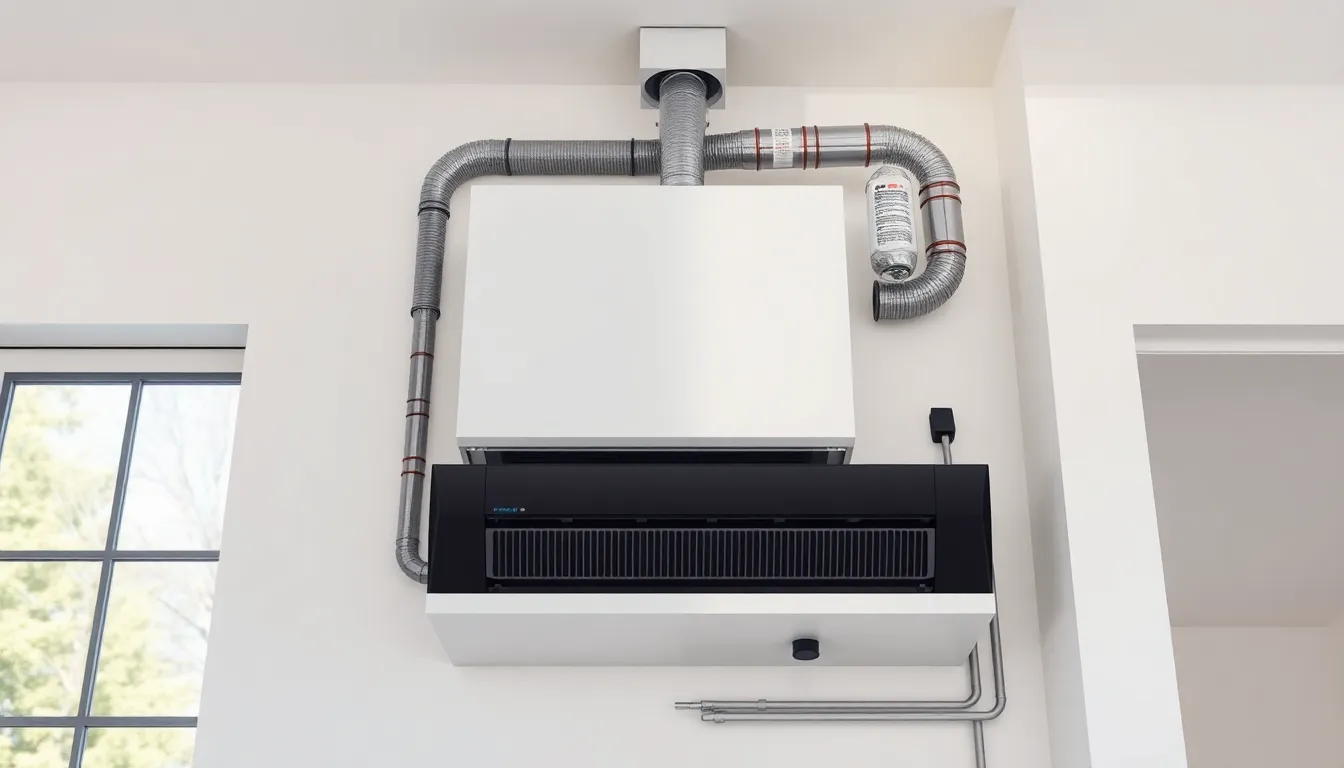Installing a new HVAC system can be a significant investment, but it often comes with hidden benefits that can ease the financial burden. One of the most appealing incentives available is the tax credit for energy-efficient HVAC installations. This program not only helps homeowners save on their tax bills but also encourages the adoption of environmentally friendly technologies.
With rising energy costs and a growing emphasis on sustainability, understanding these tax credits becomes essential. Homeowners can potentially reduce their out-of-pocket expenses while enhancing their home’s comfort and energy efficiency. As they navigate the complexities of tax incentives, knowing the specifics of these credits can make all the difference in maximizing savings and making informed decisions.
Table of Contents
ToggleOverview of Tax Credits for HVAC Installation
Tax credits for HVAC installation offer financial relief to homeowners investing in energy-efficient systems. These credits reduce tax liabilities, making upgrades more affordable. Incentives typically cover advanced technologies like high-efficiency heat pumps, centralized air conditioners, and heating systems that meet specific Energy Star criteria.
The federal government provides the Residential Energy Efficiency Tax Credit under Section 25C. Taxpayers can receive a credit of 10% of the cost of qualified system installations, capped at $500. Certain energy-efficient models may qualify for higher tax credits, with specific amounts defined by equipment type.
State and local governments also provide additional incentives, which vary widely by region. Homeowners should research local offerings alongside federal tax credit opportunities to maximize savings. Checking eligibility is essential before making an installation, as federal guidelines and state-specific requirements may impact the amount on offer.
To benefit from these credits, documentation of purchases, including receipts and manufacturer certification statements, should be retained. This information proves essential during tax filing. Consulting a tax professional can further ensure compliance with all regulations related to tax credits for HVAC installations.
Benefits of Installing New HVAC Systems

Installing new HVAC systems provides significant advantages, particularly regarding energy efficiency and home value. These benefits contribute to long-term savings and enhanced property appeal.
Energy Efficiency and Savings
Energy-efficient HVAC systems consume less energy, leading to lower utility bills. For instance, systems that meet Energy Star ratings can save homeowners up to 30% on energy costs compared to traditional units. Additionally, new models often incorporate advanced technology, such as smart thermostats, which optimize performance and further reduce energy usage. Tax credits for these systems enhance financial benefits, with potential credits making optimum upgrades more affordable. Homeowners gain immediate savings on monthly bills while benefiting from long-term energy efficiency improvements.
Increased Home Value
New HVAC systems can significantly increase a home’s market value. Potential buyers often prioritize energy-efficient features, viewing them as a long-term investment and a money-saving attribute. Homes with modern, efficient systems tend to sell faster and at higher prices. According to the National Association of Realtors, 62% of home buyers consider energy efficiency to be a crucial factor in their purchasing decision. Furthermore, energy-efficient upgrades, especially when combined with available tax credits, can lead to a higher return on investment during resale.
Eligibility Requirements for Tax Credit
Homeowners seeking tax credits for installing new HVAC systems must meet specific eligibility requirements. Understanding these factors ensures maximum financial benefits.
Types of HVAC Systems Qualifying for Credit
- Central Air Conditioners: Systems meeting the efficiency standards set by the Energy Star program qualify, providing significant tax credits.
- Heat Pumps: Both air-source and geothermal heat pumps can qualify if they meet the efficiency criteria outlined by the IRS.
- Natural Gas Furnaces: High-efficiency furnaces using natural gas might qualify, particularly those with annual fuel utilization efficiency (AFUE) ratings above 95%.
- Biomass Stoves: Stoves meeting specific efficiency levels can also be eligible, offering an alternative for homeowners focusing on renewable energy sources.
Documentation Needed for Application
- Purchase Receipts: Homeowners must keep receipts showing purchase dates and costs of HVAC systems.
- Manufacturer Certification: Documentation from manufacturers confirming the system meets energy efficiency standards is required for eligibility.
- Completion of IRS Form 5695: This form outlines the residential energy credits and must be submitted with the homeowner’s tax return.
- Proof of Installation: Records of professional installation or DIY projects detailing compliance with manufacturer requirements should be retained.
How to Apply for the Tax Credit
Applying for the tax credit for installing a new HVAC system involves a straightforward process. Following the right steps can maximize potential savings and ensure eligibility.
Step-by-Step Application Process
- Confirm Eligibility: Review the list of qualifying HVAC systems under the federal Residential Energy Efficiency Tax Credit, ensuring your installation meets the criteria.
- Gather Documentation: Collect necessary documents, including purchase receipts, manufacturer certifications, and proof of installation.
- Complete IRS Form 5695: Fill out IRS Form 5695, which reports energy-efficient home improvements and calculates the credit amount.
- File Tax Returns: Include the completed Form 5695 with your federal tax return during tax season. Ensure to keep copies of all documentation for your records.
- Consult a Tax Professional: Seek guidance from a tax professional to navigate regulations and maximize the benefits of available credits.
Common Mistakes to Avoid
- Ignoring State and Local Incentives: Overlook state and local programs that may offer additional tax credits or rebates, reducing overall costs.
- Failing to Retain Documentation: Neglect to keep essential paperwork, which can jeopardize claiming the tax credit.
- Relying on Inaccurate Claims: Assume that all HVAC upgrades qualify; only specific systems meet federal guidelines.
- Missing Deadlines: Forget to apply within the designated tax filing period, losing the opportunity for potential savings.
- Incomplete Form Submission: Omit necessary information or fail to complete IRS Form 5695 accurately, which can cause delays or rejections.
Taking advantage of tax credits for installing a new HVAC system can lead to substantial savings for homeowners. By investing in energy-efficient units, they not only lower their tax liabilities but also enhance their home’s comfort and market value. With various federal and local incentives available, it’s essential to stay informed and explore all options. Proper documentation and understanding eligibility requirements are key to maximizing these benefits. As energy costs continue to rise, making the switch to a more efficient HVAC system is a smart financial decision that pays off in the long run.


